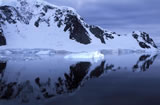 |
 |
 |
 |
 |
 |
| |
| |
Objective
and Designation |
| |
The Protocol on Environmental Protection to
the Antarctic Treaty designates Antarctica as a nature reserve
devoted to peace and science. |
 |
 |
| |
Environmental
Principles |
| |
Activities
in Antarctica shall
be planned and conducted so as
to limit adverse impacts on the
Antarctic environment and its
ecosystems.
Activities in Antarctica shall be planned and conducted
on the basis of prior environmental
impact assessment.
Activities shall be planned and
conducted in Antarctica so as to accord priority
to scientific research and to
preserve the value of Antarctica
as an area for the conduct of
such research. |
 |
 |
|
|
|
|
| |
| |
International
Cooperation |
| |
The Parties shall cooperate in the protection
of the Antarctic environment and the conduct of environmental impact
assessment in Antarctica. |
 |
 |
| |
Prohibition
of Mineral Resource Activities |
| |
Any activity relating to mineral resources in
Antarctica, other than scientific research, shall be prohibited. |
 |
 |
| |
Environmental
Impact Assessment |
| |
Proposed activities in Antarctica shall be subject
to the procedures set out in Annex I for prior assessment of the impacts
on the Antarctic environment. |
 |
 |
| |
Committee
for Environmental Protection |
| |
The Protocol
on Environmental Protection to
the Antarctic Treaty establishes
the Committee for Environmental
Protection. |
 |
 |
|
|
|
 |
Black-browed
albatross
Diomedea
melanophris
Photograph:Charles
Glover |
|
| |
| |
Compliance
with the Protocol and Inspection |
| |
Each Party shall take appropriate measures within
its competence, including the promulgation of laws and regulations,
administrative actions and enforcement measures, to ensure implementation
of the this Protocol, while arranging for inspections by observers
and sending reports of inspections to the Antarctic Treaty Consultative
Meeting. |
 |
 |
| |
Emergency
Response Action |
| |
Each Party
shall provide for prompt and effective
response action to emergencies
and establish contingency plans
for response to incidents with
potential adverse effects on the
Antarctic environment and ecosystems. |
 |
 |
| |
Liability |
| |
The Parties shall undertake to elaborate rules
and procedures relating to liability for environmental damage in Antarctica. |
|
|
|
 |
| Photograph:Charles
Glover |
|
 |
 |
|
|
|
|
| |
| Annexes |
 |
 |
| |
Annex
I: Environmental Impact Assessment |
| |
Annex I explains
that proposed activities in Antarctica require
prior assessment of the impacts
on the Antarctic environment. |
 |
 |
| |
Annex
II: Conservation of Antarctic
Fauna and Flora |
| |
Annex II specifies the Antarctic animals and plants
and their protection as well as restrictions on non-native species. |
 |
 |
| |
Annex III: Wastes Disposal and Management |
| |
Annex III encourages to reduce the amount of wastes
as far as practicable and specifies wastes to be removed from Antarctica
(radio-active materials, electrical batteries, wastes containing harmful
levels of heavy metals, etc.), incineration, disposal on land and
in the sea, storage, restriction on materials (PCB, non-sterile soil,
polystyrene beads, chips or similar forms of packaging, etc.), wastes
management plans and strategies. |
| |
 |
| |
Annex
IV: Prevention of Marine Pollution |
| |
Annex IV prohibits
the discharge of oil or oily mixture,
noxious liquid substances, garbage
including plastics and sewage
into the sea while ships owned
by Parties and any other supporting
ships are operating in Antarctica. |
 |
 |
| |
Annex
V: Area Protection and Management |
| |
Annex V regulates
the protection and management
of the Antarctic Specially Protected
Areas, the Antarctic Specially
Managed Areas, Historic Sites
and Monuments. |
 |
 |
|
|
|
 |
Gentoo
Penguins
Pygoscelis
papua |
|
| |
| |
Antarctic
Specially Protected Areas |
|
An
area may be designated as an Antarctic
Specially Protected Area to protect
outstanding environmental, scientific,
historic, aesthetic or wilderness
values, any combination of those
values, or ongoing or planned
scientific research. It is required
to obtain a permit for entry into
an Antarctic Specially Protected
Area. |
 |
 |
 |
 |
| |
Antarctic
Specially Managed Areas |
|
An
area may be designated as an Antarctic
Specially Managed Area to avoid
possible conflicts, improve cooperation
between Parties or minimize environmental
impacts. A permit is not required
for entry. |
 |
 |
 |
 |
| |
Historic
Sites and Monuments |
|
Sites or monuments of recognized
historic value may be listed as Historic Sites and Monuments. |
|
|
|
| |
|
|
|
L